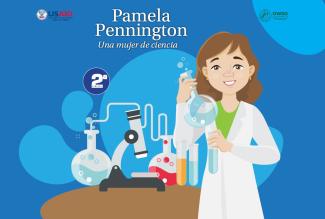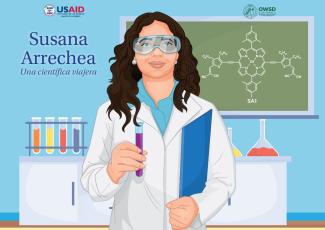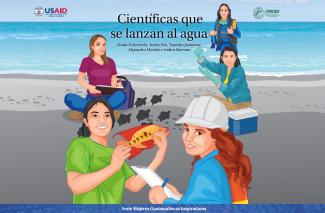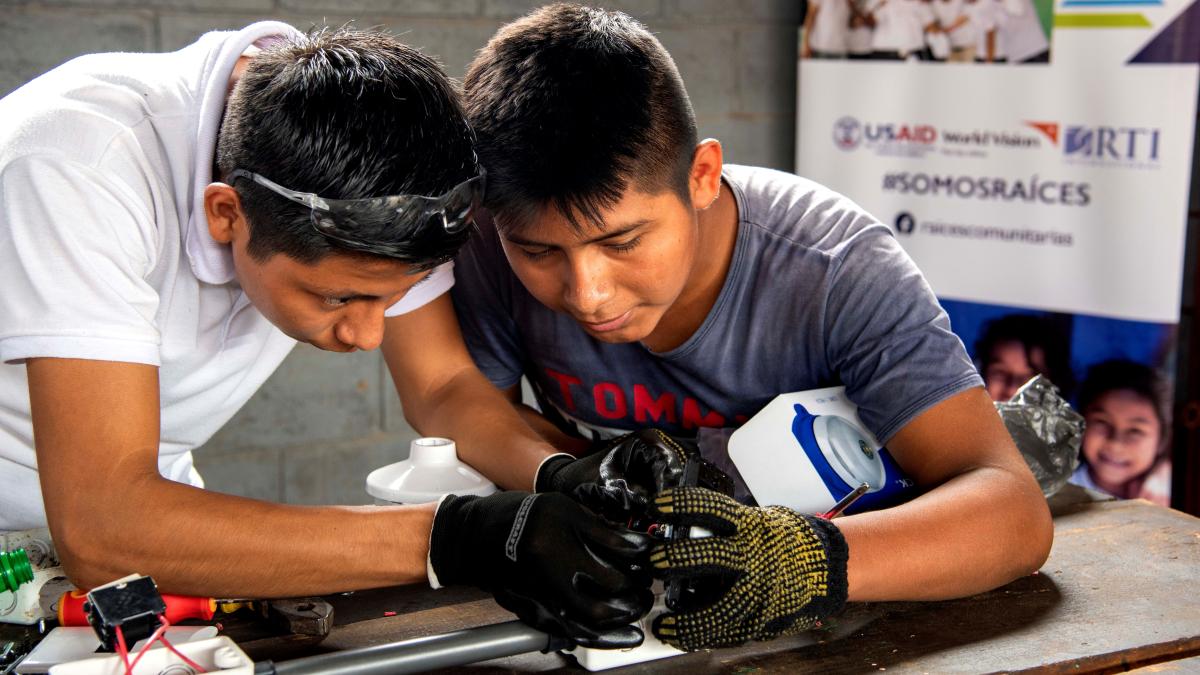
Sustained economic growth, healthier lives, and greater civic engagement through access to quality education.
Primary school enrollment rates in Guatemala have progressed significantly over the past 20 years. However, challenges still exist in the quality of education, learning outcomes, and transition rates of students into secondary and higher education. Disparities persist between boys and girls, urban and rural, and ladino and indigenous communities.
USAID supports the Government of Guatemala to ensure children and youth stay in school or find an alternative pathway to gain the basic skills necessary to compete for productive employment or start a business in Guatemala. This educational foundation is critical to providing a realistic alternative to irregular migration.
CONTEXT AND CHALLENGES
Guatemala spends 2.8 percent of the gross domestic product (GDP) in education, which is far less than the regional average. Lack of funding, paired with a low internal efficiency of the education system have limited the learning outcomes of the students.
The country still faces serious challenges in education quality, coverage, teacher training, and equity. The last learning assessment conducted for primary grades in 2014 found that only 40 percent of sixth graders reached performance standards in reading. Exacerbating the challenge, most Guatemalan youth do not reach high school with 41 percent of all teenagers (13–18 years) out-of-school. This rate rises to 61 percent in the Western Highlands, which is predominantly indigenous. Although universities have been consistently expanding their services to rural areas, less than 10% of the youth enroll in college education due to different learning and economic constraints.
IMPROVING THE LIVES OF UNDERSERVED CHILDREN AND YOUTH
USAID’s education investments improve basic education for underserved children and youth living in municipalities with the highest rates of irregular migration. Interventions under this objective sustainably improve primary school students’ outcomes in reading, mathematics, and social and emotional learning (SEL), as well as increase students’ transition rates from primary school to the lower secondary school level. USAID also supports decentralization efforts designed to empower municipalities to lead and invest in the education sector.
USAID has provided technical support to the Ministry of Education (MOE) to implement the national literacy model for bilingual and intercultural contexts, develop teaching and learning materials in multiple languages, train teachers and reading coaches, and engage parents and community members to promote reading. USAID investments have supported the MOE to implement and improve processes and tools for management and decision making by strengthening data management and systems and improving preparedness for natural disaster and emergency response. USAID is also supporting the MOE to improve conditions in schools by installing and improving latrines, handwashing stations, and rainwater catchment systems in schools; training students in hygiene good practices; and promoting the use of clean energy in schools.
As a response to the COVID19 pandemic, USAID partnered with the MOE and local partners to prepare 17,000 schools for a safe return to school by providing sanitization kits and information on safety protocols for teachers, principals, and community members. These actions benefited over 2.4 million students directly and have been supported for further sustainability through MoE funding of school operations. Other USAID interventions support the development of in-person and distance processes for training and data analysis to improve management and coaching in schools and to respond to events and emergencies that may affect school operations.
PROVIDING EDUCATION AND TRAINING OPPORTUNITIES TO YOUTH
USAID’s efforts respond to a key driver of irregular migration: lack of employment and educational opportunities. USAID provides in-school and out-of-school youth with opportunities to gain skills necessary to contribute to their communities and gain employment. USAID also improves the ability of state and non-state schools to deliver quality education: alternative basic education, workforce development, soft skills, and vocational training. USAID integrates social emotional learning and soft skills into educational programs ranging from primary school up to vocational training to ensure that youth have the foundational skills for life and work. USAID youth programs utilize the Positive Youth Development (PYD) approach, emphasizing youth strengths and providing support and opportunities that will help them achieve goals, transition to adulthood in a productive, healthy manner, and participate actively in their communities. Youth who participate in USAID programs have the opportunity to increase their employability credentials, begin or improve entrepreneurship initiatives, and participate in service projects in their communities as part of building their resume and experience.
ENGAGING AND STRENGTHENING HIGHER EDUCATION INSTITUTIONS
USAID has worked with universities to strengthen their capacities for providing education and careers based on recent developments in research and responding to needs identified for the country. Particularly, universities that work in rural settings improved their capacity in literacy instruction in bilingual settings and implemented these programs through a blended learning approach offering certificate diplomas and master’s programs. Participants in these programs also had the opportunity to offer training workshops reaching more than 1,000 rural teachers. USAID’s support to public and private universities has enabled the expansion of curricula in the following areas: functional literacy, numeracy, financial skills, socio-emotional learning, environmental education, geographic information systems, and agriculture, among others.
KEY RESULTS
- Since 2015, USAID education quality interventions have directly impacted more than 2.5 million students in primary schools or equivalent settings (Lifelong Learning Project/Proyecto Leer y Aprender).
- In coordination with the MOE, USAID delivered 17,100 cleaning and sanitation kits to the same number of primary schools in preparation for a “safe return to school” after the COVID-19 pandemic (Safe Return to Schools).
- In FY 2021, USAID provided technical assistance to the Ministry of Education to implement the safe return-to-school protocols by developing a mobile application to aid administrators and teachers to implement COVID-19 safety protocols (Lifelong Learning and Safe Return to School).
- USAID developed 1,000 daily self-learning sessions for second to sixth grade students nationwide in the areas of language, arts, and mathematics to support at-home learning during the COVID-19 pandemic (Lifelong Learning Project/Proyecto Leer y Aprender).
- USAID expanded access to literacy through the development of 343 digital books in six languages through the Bloom software platform, which registered 131,157 reads in FY 2021 (Lifelong Learning Project/Proyecto Leer y Aprender).
- USAID created a digital book series about Guatemalan women in the fields of science, business, culture, art, technology, engineering, and math. These biographies, which feature under-represented populations and individuals breaking barriers in their fields, provided fourth through sixth grade children with the opportunity to see Guatemalans at the cutting edge of research and making contributions locally and globally (Lifelong Learning Project/Proyecto Leer y Aprender).
- Since 2017, 22,680 youth who have participated in USAID training and support activities have structured a life plan for their future (Puentes Project).
- Since 2017, 27,902 youth have completed workforce development programs under USAID assistance (Puentes Project).
- In FY 2021, 2,975 learners received USG education assistance to attend tertiary and/or vocational education institutions (Puentes Project).
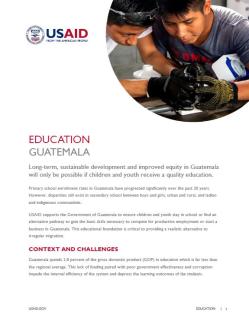
Programs
Inspiring Guatemalan Women Series
USAID, through the Read and Learn Project (2014-2019), seeks to ensure access to quality education for children, especially indigenous children, and rural youth (15 to 24 years old) outside the school system. As part of the project, a series of books "Mujeres Guatemaltecas Inspiradoras" (Inspiring Guatemalan Women) was produced. It is made up of biographies of Guatemalan women who inspire and contribute to the country in different areas: science, business, sports, culture, art, etc. It is a resource oriented for reading by students from fourth to sixth grade, includes a guide for use at home or in the classroom and an experiment related to the work done by the author or authors.
You can find three books in Spanish:
